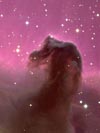 Research in the field of exobiology relies on one of the biggest assumptions we make about the universe – that we are not alone, that there could be life on worlds other than the Earth.
Research in the field of exobiology relies on one of the biggest assumptions we make about the universe – that we are not alone, that there could be life on worlds other than the Earth.
However, one assumption we should not make about life elsewhere in the universe is that it uses the same templates and building blocks as life on earth. There is no reason to presume that life on another planet will use the molecules resembling nucleic acids, DNA and RNA, to encode its genetic information. Life may not be limited to existing on small blue worlds. There is an amazing diversity of life on earth from the obvious insects, fish, mammals, to vast fungal domains and microbes that live on boiling sulfur deep in the sea or underground. Some of these species were not even dreamed of fifty years ago, and may only scratch the surface of this single planet we call Earth.
There is now indirect theoretical evidence to suggest that inorganic forms of life might exist in plasma clouds between the stars, even, or that water need not be the universal solvent of life at all. So, any discussion of exobiology always comes back to that first question – would we recognize alien life if we saw it?
A recent report published by the US National Research Council (NRC)suggests that scientists focus at least some of their efforts on “weird” life, that is, the possibility of life that does not confirm to the standard terrestrial chemical blueprint. You can read my further thoughts on this in the August issue of our physical sciences newsletter, Intute Spotight.
Also in the August issue: Casting pearls – Despite its common use in jewellery and for decoration, mother-of-pearl, or nacre, could be more suited to engineering applications. This natural material found lining the shells of sea creatures, such as oysters and abalones, is 3000 times less susceptible to fractures than the mineral, aragonite, from which it is made. Amazingly, driving a heavy lorry over an abalone shell will crack the shell itself but not the nacre lining.
Now, physicist Pupa Gilbert of the University of Wisconsin-Madison, and her colleagues there and at the Institute for the Physics of Complex Matter in Switzerland and the UW-Madison Synchrotron Radiation Center have taken the first steps to understanding how nacre forms and the secret of its great strength.
Finally, “Imagine a super-sized bald eagle with a 7 metre wingspan,” suggests Sankar Chatterjee of Texas Tech University, “It would darken the sky. It was a very aggressive bird that flew over the pampas of Argentina to sweep down from the sky and seize large prey with a formidable beak.” He and his colleagues have used computer software designed to model helicopter flight to reveal that this giant bird – Argentavis magnificens – could not take off by flapping its wings only. Instead, it needed a launch pad on a high precipice that would allow it to catch rising thermals so it could soar into the air and undertake 300 km trips with ease.